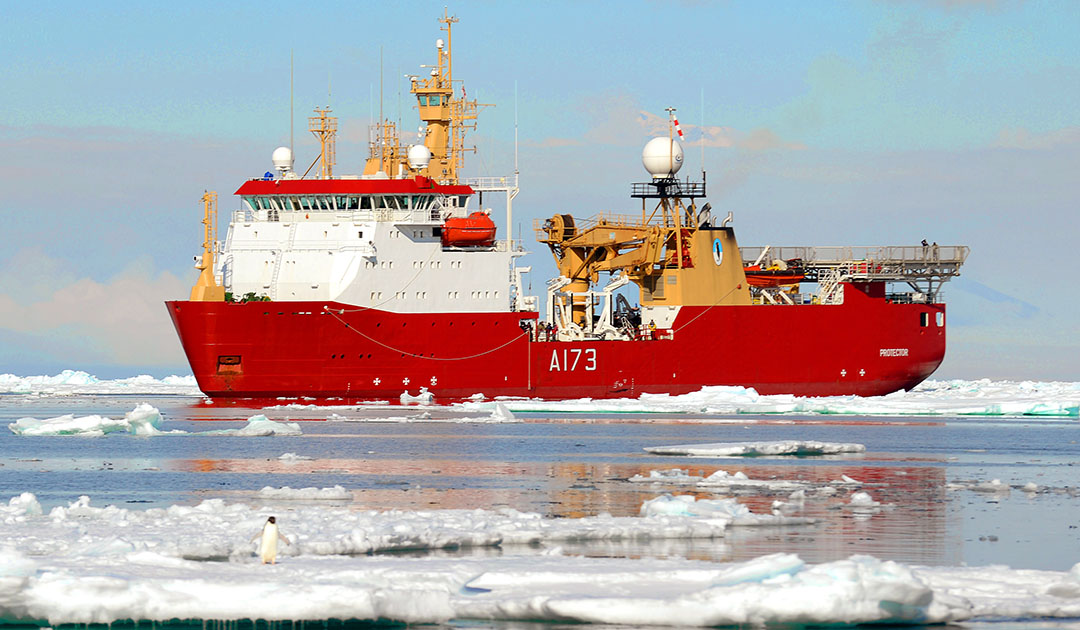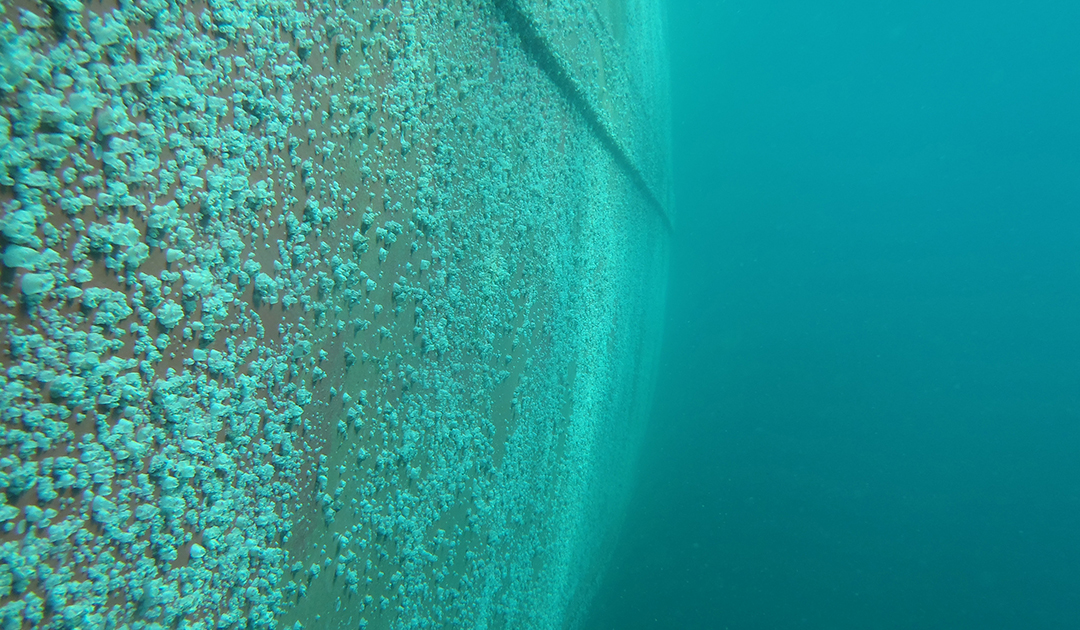
Global shipping transports not only goods, researchers, tourists and the catches of fisheries across the oceans, but also any number of marine animals and plants that hitch a ride on the hulls of ships, and thus conquer new areas. In many regions of the world, introduced species are a major problem for marine ecosystems because native species often have nothing to counter the new neighbors. Even the marine wildlife of isolated Antarctica is not safe from immigrants. Researchers from the University of Cambridge and the British Antarctic Survey have now studied the global movements of all ships entering Antarctic waters and published their findings in the journal PNAS.
To date, only one species of mussel(Mytilus cf. platensis) is known to have been introduced from southern Patagonia into the Southern Ocean with its unique fauna and flora. Its isolated location and harsh conditions may have ensured that not more species have found their way to Antarctica. However, as shipping traffic in Antarctica continues to increase, so does the risk of introducing non-native animals and plants into the Southern Ocean.
As the scientists prove with their current study, Antarctica is connected to all regions of the world via an extensive transport network of fishing, tourism, research and supply ships. And it must be assumed that each of these ships has hitchhikers on board that potentially threaten the stability of Antarctica’s pristine environment.
The researchers identified 1,581 ports worldwide from which ships depart for Antarctica, all of which are potential sources of invasive species. Species such as mussels, barnacles, crabs and algae colonize ship hulls, which is referred to as “biofouling,” although ships are usually coated with special so-called anti-fouling coatings designed to prevent fouling. However, these in turn are by no means unproblematic, as they can be harmful or even lethal to other marine organisms.
The results of the study suggest that alien species could be introduced to Antarctica from anywhere in the world. Using satellite data, the scientists found ships most frequently travel between Antarctica and ports in South America, northern Europe and the western Pacific.

“The species that grow on the hull of a ship are determined by where it has been. We found that fishing boats operating in Antarctic waters visit quite a restricted network of ports, but the tourist and supply ships travel across the world,” explains Arlie McCarthy, a researcher at the University of Cambridge’s Department of Zoology and the British Antarctic Survey. “We were surprised to find that Antarctica is much more globally connected than was previously thought. Our results show that biosecurity measures need to be implemented at a wider range of locations than they currently are. There are strict regulations in place for preventing non-native species getting into Antarctica, but the success of these relies on having the information to inform management decisions. We hope our findings will improve the ability to detect invasive species before they become a problem.”
Species that are actually native to temperate latitudes or the tropics, and reach Antarctica by ship, have a rather low chance of survival in the icy waters of the Southern Ocean. However, the situation is quite different for species that travel from pole to pole and are already adapted to the cold conditions. The ships that enable them to make the long voyage across the Atlantic or Pacific are primarily tourist and research vessels – they usually spend the northern summer in the Arctic and the southern summer in Antarctica.

The scientists found that research vessels stay longer in Antarctic ports than tourist vessels. Fishing and supply vessels stay even longer on average. And the longer the stays, the higher the likelihood that non-native species will be introduced, as previous studies have already shown. The Antarctic Peninsula and the South Shetland Islands are the most frequently visited, accounting for 88 percent of all vessel activity in the Southern Ocean.
In the course of its evolution, Antarctic fauna has not learned to deal with immigrating species, such as mussels, because the Circumpolar Current has successfully prevented species from more northern climes from advancing on their own for millions of years. It is not known whether the above-mentioned mussel species, some small individuals of which have been found in a bay of King George Island north of the Antarctic Peninsula, has been able to stay and thrive there. If so, this would probably not bode well for the native species, as mussels have no natural enemies in Antarctica. With shallow-water crabs, a new predator species could immigrate that Antarctic animals have never encountered.
“Invasive, non-native species are one of the biggest threats to Antarctica’s biodiversity – its native species have been isolated for the last 15-30 million years. They may also have economic impacts, via the disruption of fisheries,” says Professor David Aldridge of the Department of Zoology at the University of Cambridge, senior author of the study.

Although no invasive species should have become established in Antarctica to date, growing ship activity increases the risk of accidental introductions of non-native species.
Not only for whales, penguins and seals, but also for krill fisheries, invasive species that could displace krill could become a major problem. Krill is an important component of fish feed used in the global aquaculture industry, and krill oil is widely sold as a dietary supplement.
“Biosecurity measures to protect Antarctica, such as cleaning ships’ hulls, are currently focused on a small group of recognised ‘gateway ports’. With these new findings, we call for improved biosecurity protocols and environmental protection measures to protect Antarctic waters from non-native species, particularly as ocean temperatures continue to rise due to climate change,” said Professor Lloyd Peck, marine biologist at the British Antarctic Survey, who was also involved in the study.
Julia Hager, PolarJournal
More on the subject:





